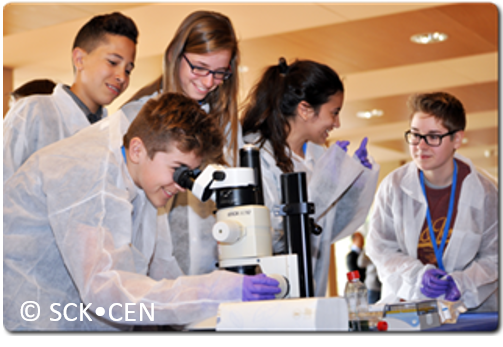Mechanisms of action of advanced structural materials during anaerobic digestion of cheese whey wastewater

Category
Ph D Defense
Date
Venue
KU Leuven, Elektrotechnisch Instituut, Aula R, 00.54 - Kasteelpark Arenberg 10
3001 Heverlee, België
3001 Heverlee, België
Promovendus/a: Jing Ning
Promotor(en): Prof. dr. ir. Lise Appels, Prof. Pavel Jenicek, De heer Mohammadreza Kamali
Everyday, huge amounts of wastewater are produced, both at home (e.g., from kitchens and toilets) and in industry (such as the food sector). If this water is discharged directly into water bodies such as oceans and rivers without proper treatment technology, it can cause negative effects to aquatic life and human health. Anaerobic digestion (AD) is a wastewater treatment technology in which a community of specific anaerobic microorganisms degrade organic matter and ultimately produce biogas containing methane and carbon dioxide through four consecutive stages (i.e., hydrolysis, acidogenesis, acetogenesis, and methanogenesis). Biogas, as a renewable energy source, can be an alternative to fossil fuels such as coal and oil, thereby helping to alleviate pressure on fossil fuel resources and promote sustainable development. However, in the anaerobic process of wastewater with high organic matter content, two key factors lead to the observed low methane yields. First, the weak electron transfer makes the cooperation between different microorganisms unsmooth, affecting the overall work efficiency. Secondly, the intermediate products produced in the first two stages are easy to accumulate, making the environment harsh (pH drops), unsuitable for the growth of microorganisms in the last two stages, and inhibiting methane production.In this thesis, carbonaceous and metallic-based materials—including biochar, modified biochar, and metal-organic frameworks (MOF)—were added to address the challenge of low methane yields and to investigate the underlying mechanisms at 0.25-1.00 g/L. The results showed that 0.75 and 1.00 g/L biochar-based materials containing alkaline metal elements (e.g., Ca) raised the pH by increasing alkalinity, thereby shortening the recovery time of methane production by 8–30% from inhibition. In contrast, 1.00 g/L MOF prolonged the time to resume methane production by 12% due to a decrease in pH by the release of protons from the acidic functional groups (e.g., -COOH). For methane yield, biochar-based materials and MOFs with suitable specific surface areas and high conductivity increased the methane yield by 10–48% by enhancing electron transfer. However, biochar-based materials with larger specific surface areas, such as acacia biochar (77.78 m²/g), reduced cumulative methane production by up to 34%, due to excessive microbial attachment to material surfaces, which hinders interspecies cooperation. Among all materials, 1.00 g/L of low-cost geopolymers derived from waste (e.g., fly ash, pinewood biochar, and sludge powder) as additives for anaerobic digestion can be commercialized in wastewater treatment plants to increase methane production as renewable energy, which will meet sustainable development.
All Dates
- 2025-10-06 16:00
Powered by iCagenda







